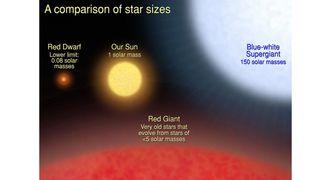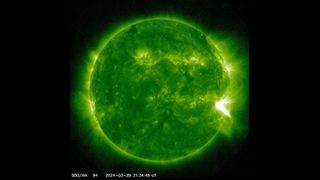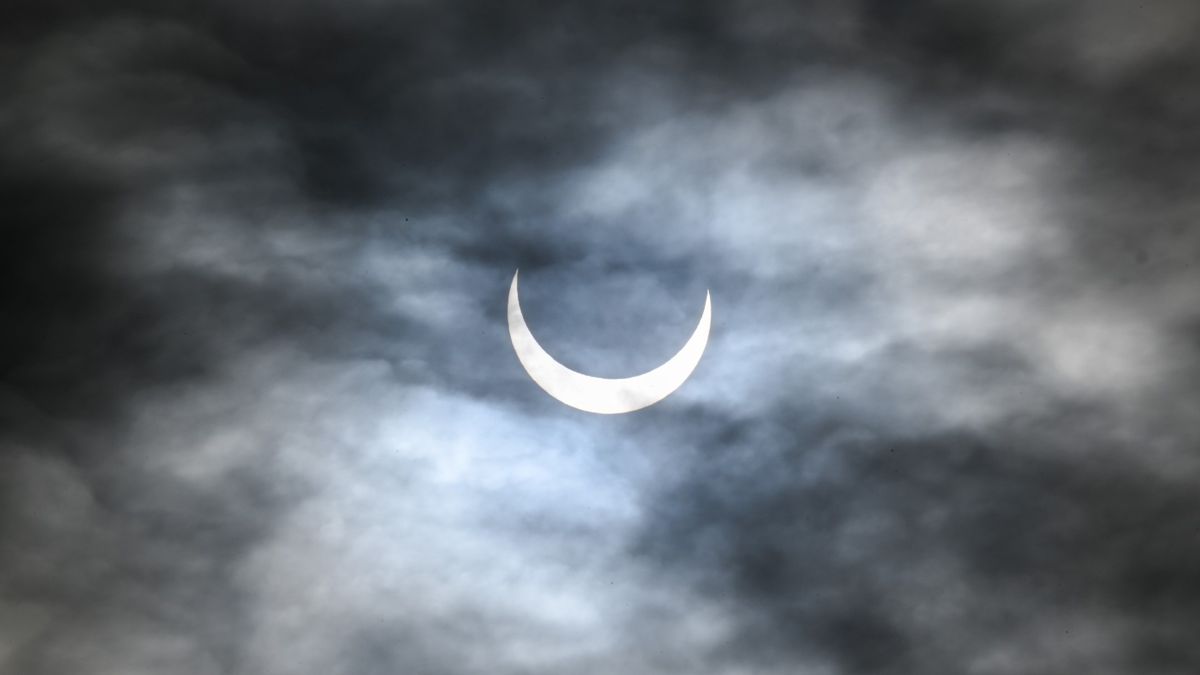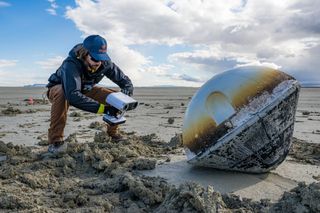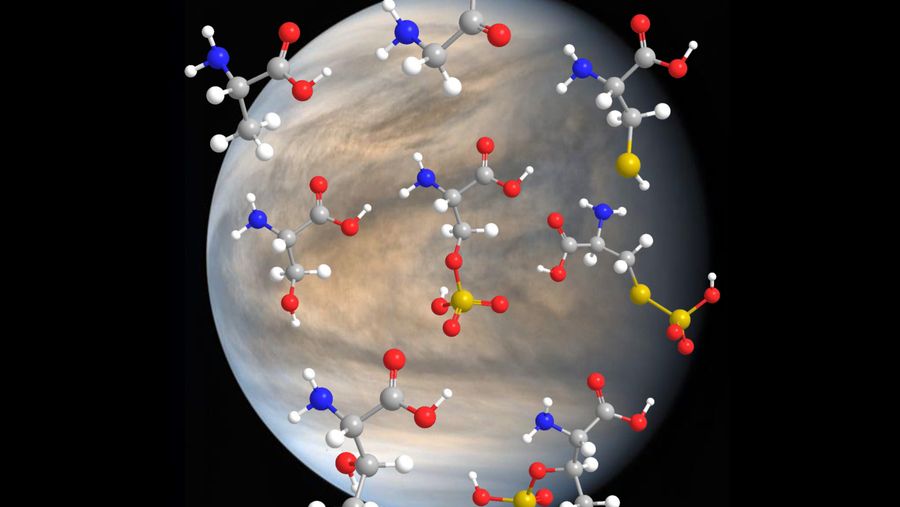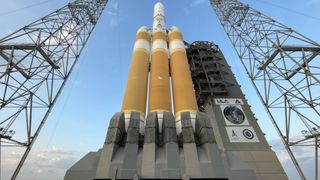In December 2023, the Hubble Space Telescope completed its largest program since launching in 1990. With this program, the telescope made observations of 500 individual stars over three years — and scientists are now ready to dive into this cosmic Easter egg of data. The comprehensive Hubble Telescope survey is called the Ultraviolet Legacy Library of Young Stars as Essential Standards, or ULLYSES; Hubble was deemed by ULLYSES operators as the sole active telescope capable of accomplishing such a pioneering endeavor. These ultraviolet-light-observation treats will last way past the Easter holiday,…
Read MoreCategory: The Moon
Our moon
‘Everything is interrelated.’ For the Navajo Nation, the April 8 solar eclipse is a spiritual experience
The “Great North American Eclipse” is just a little over a week away. For many in the path of totality, preparing for the total solar eclipse on April 8 includes coming up with a plan of where to watch it, who you are going to watch it with, and securing protective solar glasses to be able to safely witness the procession of celestial transformation in the sky. But for the indigenous communities of North America, it’s a whole different type of preparation, and a philosophy that’s very different from Western…
Read MoreWe asked over 50 women space leaders for words of inspiration. Here’s what they told us
We wouldn’t be where we are today without the leaders of the past — so, to build our future, perhaps we should celebrate the innovators of our present. The history of women’s contributions to the space industry is significantly shorter than it is for men, simply because women were dealt a delayed start in the race. For example, NASA’s astronaut program began in 1959, but it wasn’t until 1978 when the agency’s lineup of astronaut candidates finally included women. Yet, thanks to many brave trailblazers who pushed against the unfair…
Read MoreDune: What the climate of Arrakis can tell us about the hunt for habitable exoplanets
Frank Herbert’s Dune is epic sci-fi storytelling with an environmental message at its heart. The novels and movies are set on the desert planet of Arrakis, which various characters dream of transforming into a greener world – much like some envision for Mars today. We investigated Arrakis using a climate model, a computer program similar to those used to give weather forecasts. We found the world that Herbert had created, well before climate models even existed, was remarkably accurate – and would be habitable, if not hospitable. However, Arrakis wasn’t…
Read MoreThis Week In Space podcast: Episode 104 — The Artemis Accords, Ecuador, and You
On Episode 104 of This Week In Space, Rod and Tariq talk with National Space Society chapter leader Robert Aillon about NASA’s Artemis Accords. Spaceflight is no longer just for superpowers—there are now 37 countries signed to NASA’s Artemis Accords for the return to the Moon, and previously non-spacefaring nations are getting into the spaceflight trade, Ecuador among them. Aillon, who started a National Space Society chapter in Ecuador after attending a graduate program at the University of Arizona’s Thunderbird School, was a prime mover in getting Ecuador to sign…
Read MorePowerful X-class solar flare slams Earth, triggering radio blackout over the Pacific Ocean
Satellites have detected a massive solar flare powerful enough to ionize part of Earth’s atmosphere. Scientists spotted the solar flare erupting from the bottom of the sun on Thursday (March 28), using satellites from the National Oceanic and Atmospheric Administration (NOAA), according to the organization’s Space Weather Prediction Center. The flare, which peaked at 4:56 p.m. ET, was categorized as an X1.1 flare. X-class flares are the most powerful type of explosion the sun can produce, according to NASA. A solar flare (far right) bursts from the sun’s surface, as…
Read MoreWhy low-level clouds vanish during a solar eclipse
The splendor of a solar eclipse is unique to our world — nowhere else in the solar system does a planet’s moon so perfectly block the light of the sun. The fast and fleeting darkness of those events affects many things on Earth, including animal behavior and waves in the ionosphere. Researchers have now found that cumulus cloud cover fell by more than a factor of 4, on average, as the moon’s shadow passed over Earth during a recent annular eclipse. This little-studied aspect of solar eclipses has important lessons for geoengineering efforts aimed at…
Read More‘Them space drugs cooked real good:’ Varda Space just made an HIV medicine in Earth orbit
On Feb. 21, after some seven months in space, Varda Space Industries’ W-1 capsule successfully returned to Earth, carrying with it a unique payload: the HIV/AIDS medication ritonavir. Varda Space seeks to autonomously manufacture pharmaceuticals in microgravity, a strategy that could ultimately reduce the cost of life-saving drugs — and, according to a new preprint paper, the company is one step closer to achieving that goal. The W-1 mission sought to test the feasibility of making therapeutics in space, testing Varda’s hardware off Earth for the first time. During its time…
Read MoreLife as we know it could exist on Venus, new experiment reveals
If Venus hosts lifeforms in its toxic clouds, they likely won’t be deprived of amino acids, one of the essential building blocks of life (as we know it). At least, that’s what scientists say is the result of a new lab experiment. Despite being Earth’s “twin,” Venus sizzles at temperatures reaching hundreds of degrees and is blanketed by clouds made of corrosive sulfuric acid, a colorless, carcinogenic liquid that dissolves metals, erodes our teeth and irritates our eyes, noses and throats. As such, the rocky planet isn’t considered to be…
Read MoreFinal launch of Delta IV Heavy rocket scrubbed late in countdown
We’ll have to wait at least one more day to see the swan song of United Launch Alliance’s (ULA) powerful Delta IV Heavy rocket. The Delta IV Heavy was supposed to launch for the final time this afternoon (March 28), sending a U.S. spy satellite skyward from Cape Canaveral Space Force Station in Florida. But the attempt was scrubbed with just under four minutes left in the countdown “due to an issue with the gaseous nitrogen pipeline which provides pneumatic pressure to the launch vehicle systems,” ULA wrote in an…
Read More